
table of contents
- What characterizes an office space?
- Meaning for office plants
- 1. light
- 2. humidity
- 3. temperature
- 4. air
- Concrete examples of plants
- The no-go
Office spaces are generally seen as monotonous, pragmatic and sterile. To prevent it from staying that way, many employees in offices use indoor plants to achieve a friendlier character. However, not all plants are suitable as office plants. Here you can find out what is important when it comes to indoor plants in the office and which plants are an absolute no-go.
What characterizes an office space?
Of course, you cannot lump all office spaces together. Because like every plant, every office space is individual to a certain extent. However, some fundamental aspects can be identified that at least characterize the large number of typical office uses:
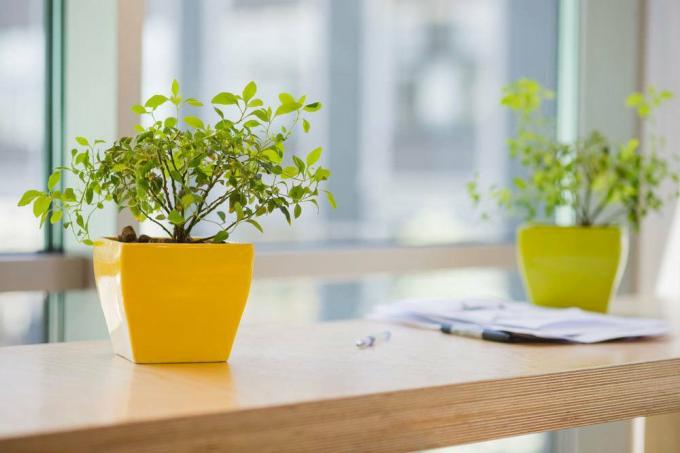
- comparatively poor natural exposure due to the absence of glare at the computer workstation
- because of floor-to-ceiling glazing, curtain walls, etc. often no possibility of placing it directly at the window - this means that natural lighting for plants is even worse
- mostly extremely dry room climate due to lack of evaporation possibilities, ventilation system, possibly Air conditioning etc.
- relatively high room temperature over 20 degrees Celsius for sedentary activities (occupational safety)
Meaning for office plants
It is precisely this special room climate in a typical office that makes very special demands on office plants:
1. light
Plants that require full sun are likely to be only moderately successful as office plants. Due to the reduced exposure from real sunlight, especially plants come out for partially shaded or even shady locations in question.

2. humidity
Plants native to the rainforest will hardly describe the typical room climate in the office as ideal. They and all other plants that require high humidity are initially unsuitable for creating a friendlier atmosphere in offices. Instead, plants with a lower need for water in the room air should be preferred. Incidentally, plants that require intensive watering are only suitable as office plants provided that also in the case of illness or vacation of the "responsible" employees for a secure supply is.
Tip: If you still want to take moisture-loving plants with you to the workplace, you can use evaporators, e.g. B. Granulate-filled coasters, or completely or partially closed glass vessels as a closed environment, ensure the necessary humidity. However, here, too, it should be ensured that a person is always able to refill the water required for evaporation.
3. temperature
Office plants should be able to cope with the consistently warm temperatures in the office. However, plants for cool locations or plants that require a seasonal cold period are not suitable. However, if you take such a plant to work with you, it may have to be temporarily relocated to another, cooler location.

4. air
Some plants are assumed to have an air-purifying effect, which is also beneficial for the mostly stale office air. Other plants, on the other hand, impress in a different way with an intense, sometimes unpleasant odor. Even if there are no proven positive effects on the indoor air, a plant is certainly suitable to stay in this location. On the other hand, it should be avoided as much as possible to worsen the room air, which is already not ideally designed, by plants.
Attention: Even plant scents that are initially perceived as pleasant can be annoying over the course of the working day and even cause nausea. Therefore, it is better to pay attention to relatively odorless plant species and, above all, to avoid puffy, strong notes.
Concrete examples of plants
After the theoretical considerations on suitable office plants, we now want to shed some light on the darkness and look at specific examples of how to skilfully manage the greening of the dreary work environment can:
Weeping fig

The weeping fig stands like a small tree in its pot and impresses visually and through its properties. It is better known under the names Ficus or Benjamin:
- hardly any demands on earth and light
- can break down benzene, cleaning agents and paint fumes in the air
- does not like change of location
- leaves often lost during relocation
Bow hemp

Characteristic, slender shoots without branches make the bow hemp. Strange and yet reserved, it enriches many a workplace:
- high cleaning effect with benzene and solvents
- high ability to compensate for fluctuations in humidity
- low fertilizer, water and light needs
Dieffenbachia

Mostly unknown by name, as almost everyone knows the Dieffenbachia with its flat leaves and its distinctive white-green pattern:
- high air purification capacity due to high leaf mass
- fast growing
- undemanding
- low moisture requirement
Dragon tree
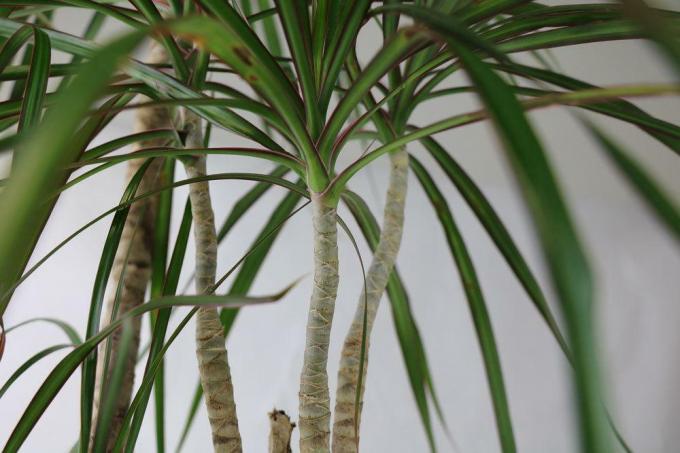
The narrow, overhanging fronds of the dragon tree are not missing in almost any household. It is also very popular in offices:
- very high absorption capacity for formaldehyde, benzene and trichlorethylene
- very easy to care for
- robust and durable
- low demands on nutrients and water
ivy
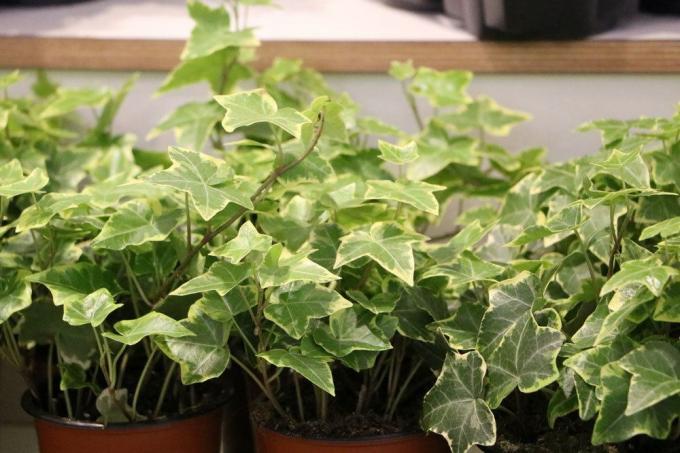
Rather unknown as a houseplant, ivy can also impress with its abilities in the office:
- is considered to be the houseplant with the highest air-purifying effect
- has a regulating effect on humidity
- good degradation capacities for benzene and trichlorethylene
- very insensitive
Attention: Ivy needs a rather cool location, such as stairwells or foyers, and is very susceptible to pests at high temperatures!
Efeutute
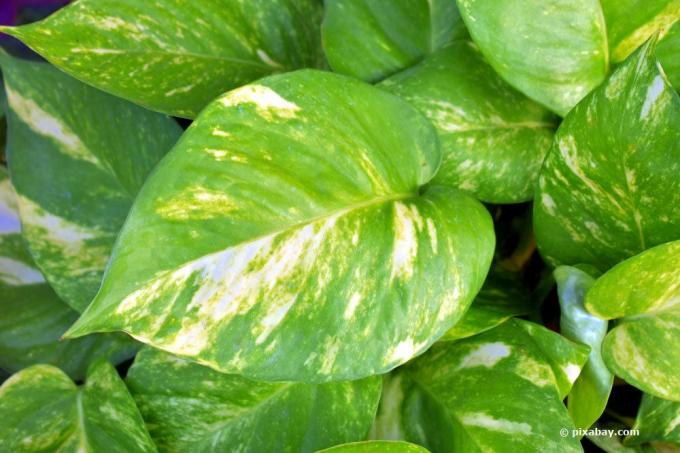
Large-format, strikingly spotted leaves characterize the Efeutute. It is considered a typical office plant, which is no coincidence:
- low light requirement
- low demands on water and nutrients
- high cleaning effect with solvent vapors and benzene
A leaf

The single leaf, also known as the leaf flag, brings shine to the dreary office with its distinctive flower:
- moisture regulating properties
- relatively low demands on light and water
- available in several colors
- lowering effect of trichlorethylene in the room air
Green lily
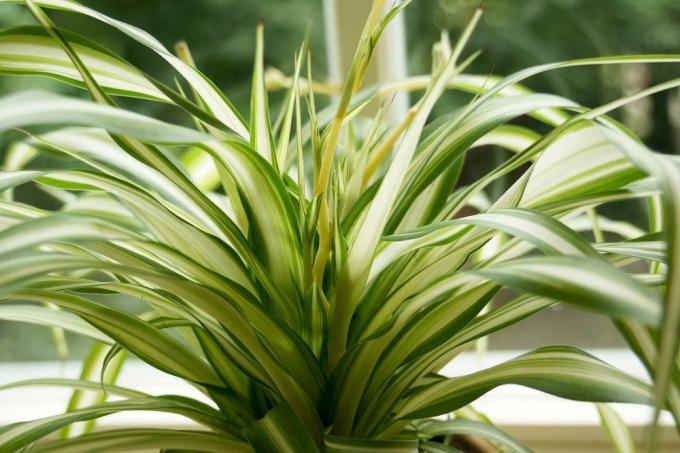
As the classic among houseplants, the green lily should of course not be missing in the office:
- highest known degradability for formaldehyde
- very undemanding
- easy-care
- distinctive leaf markings in green and white
Kentia palm
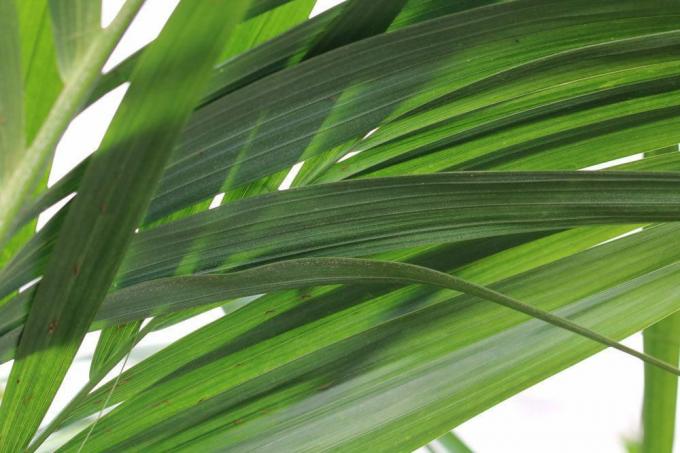
Well known and widely used, the Kentia palm convinces with numerous advantages
- very expansive due to sweeping branches
- is considered to be air-purifying
- above-average oxygen production
- high awake, therefore particularly suitable for floor locations
The no-go
Where there are particularly suitable plants, of course completely unsuitable plants are not far away. These green plants are an absolute no-go in the office:

- Asphalt clover: smells like the name suggests
- Valerian: the scent is reminiscent of cat urine
- Ferns: love moist environments
- Greisenhaupt: prefers full sun locations
- Hibiscus: needs a lot of sun
- Orchids: need high humidity
- Palm lily: needs a lot of sunlight
- Stinky straw flower: smells strongly of goat when touched
- Tillandsia: needs a lot of moisture in the room air
Of course, in individual cases there can always be situations where exactly such a no-go can be suitable. This is how a moisture-loving plant can work in conjunction with an existing indoor fountain, while plants for sunny locations with skylights or light wells are the right choice can. Therefore, when choosing the right office plants, always pay attention to the peculiarities of your own office and choose your plant accordingly. Because the universal office plant that works ideally everywhere definitely does not exist.



